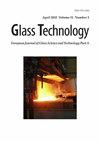A Comprehensive Survey of Deep Learning Techniques Natural Language Processing
IF 0.3
4区 材料科学
Q4 MATERIALS SCIENCE, CERAMICS
Glass Technology-European Journal of Glass Science and Technology Part a
Pub Date : 2023-05-23
DOI:10.47672/ejt.1473
引用次数: 5
Abstract
In NLP research, unsupervised or semi-supervised learning techniques are increasingly getting more attention. These learning techniques are capable of learning from data that has not been manually annotated with the necessary answers or by combining non-annotated and annotated data. This essay presents a survey of various natural language processing methods. The discipline of natural language processing, which integrates linguistics, artificial intelligence, and computer science, was established to make it easier for computers and human language to communicate with one another. It is, as we can say, relevant psychopathology for the study of computer-human interaction. The understanding of natural language, which entails enabling machines to naturally interpret human language, is one of the many challenges this area faces. Discourse analysis, morphological separation, machine translation, production and understanding of NLP, part-of-speech tagging, recognition of optical characters, speech recognition, and sentiment analysis are some of the most frequent NLP tasks. As opposed to learning, which is supervised and typically yields few correct results for a given amount of input data, this job is typically quite difficult. However, there is a sizable amount of data available that is unannotated in nature, i.e. the entire contents are available on the internet, and it typically yields less accurate findings.深度学习技术综述:自然语言处理
在NLP研究中,无监督或半监督学习技术越来越受到关注。这些学习技术能够从没有手动标注必要答案的数据中学习,或者通过组合未标注和标注的数据进行学习。本文综述了各种自然语言处理方法。自然语言处理学科是语言学、人工智能和计算机科学相结合的学科,它的建立是为了使计算机和人类语言更容易相互交流。我们可以说,它是研究人机交互的相关精神病理学。对自然语言的理解,即使机器能够自然地解释人类语言,是该领域面临的众多挑战之一。话语分析、形态分离、机器翻译、NLP的生成和理解、词性标注、光学字符识别、语音识别和情感分析是一些最常见的NLP任务。与学习相反,学习是有监督的,通常对于给定数量的输入数据产生很少正确的结果,这项工作通常相当困难。然而,有相当数量的数据本质上是没有注释的,也就是说,所有的内容都可以在互联网上获得,这通常会产生不太准确的结果。
本文章由计算机程序翻译,如有差异,请以英文原文为准。
求助全文
约1分钟内获得全文
求助全文
来源期刊
CiteScore
0.30
自引率
0.00%
发文量
0
审稿时长
>12 weeks
期刊介绍:
The Journal of the Society of Glass Technology was published between 1917 and 1959. There were four or six issues per year depending on economic circumstances of the Society and the country. Each issue contains Proceedings, Transactions, Abstracts, News and Reviews, and Advertisements, all thesesections were numbered separately. The bound volumes collected these pages into separate sections, dropping the adverts. There is a list of Council members and Officers of the Society and earlier volumes also had lists of personal and company members.
JSGT was divided into Part A Glass Technology and Part B Physics and Chemistry of Glasses in 1960.

 求助内容:
求助内容: 应助结果提醒方式:
应助结果提醒方式:


